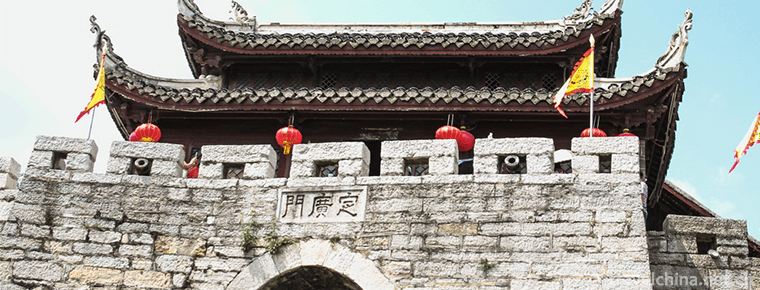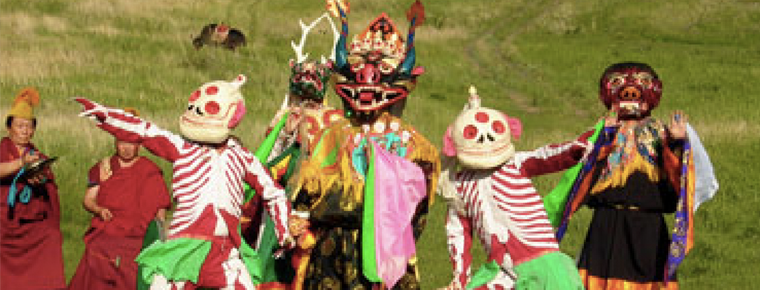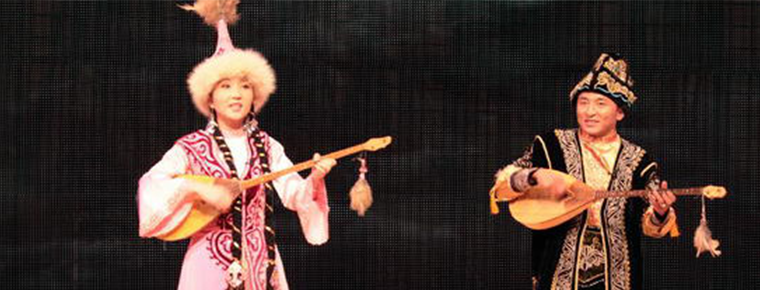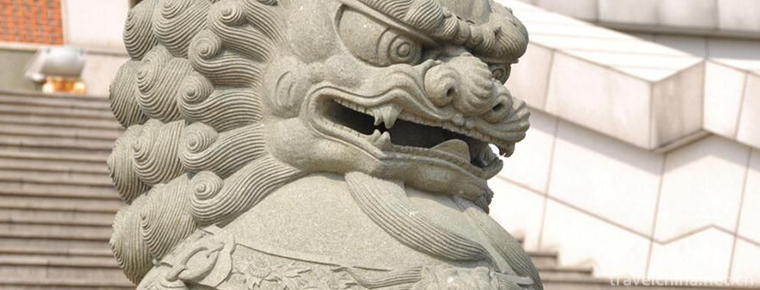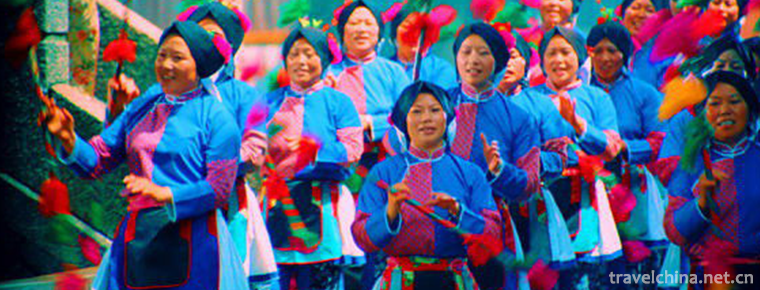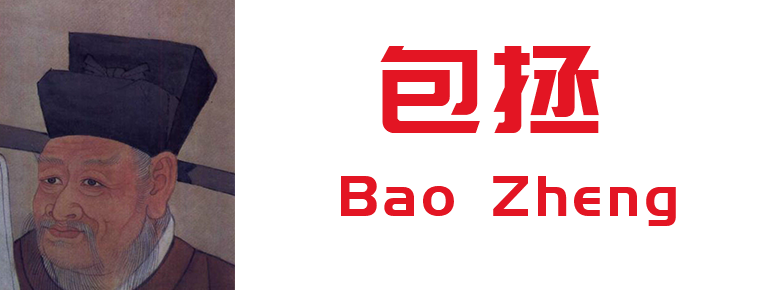Torch Festival
Torch Festival
Torch Festival is an ancient traditional festival of the Yi, Bai, Naxi, Jinuo and Lahu nationalities. It has profound folk cultural connotations and is known as the "carnival of the East". Torch festivals are held in different nationalities, mostly on June 24 of the lunar calendar. The main activities are bullfighting, goat fighting, cock fighting, horse racing, wrestling, singing and dancing performances, beauty contests, etc. In the new era, Torch Festival has been endowed with new folk functions and new forms.
Legends
The legends about Torch Festival of all ethnic groups in Yunnan have their own characteristics. The legend about Torch Festival of the Yi nationality is actually the sublation of the original cultural form by the new cultural form after the transformation from nomadism to farming. This legend retains the original information of the origin of Torch Festival to the greatest extent, and is also the legend closest to the origin of Torch Festival. The proverbs of the Naxi people about the torch festival legend retain important information about the origin of the torch festival, and together with the records in Yuxi Editor, Luquan County Chronicle and Dongxi County Chronicle, they provide important clues to explore the origin of the torch festival. The legends about Torch Festival in Dali and Kunming hide the origin of Torch Festival, but its "Star Festival" also reveals the source of Torch Festival and its deep culture.
National legend
Naxi minority
The Son of Heaven, Lauap, was jealous of the happy life of the world. He sent an old God to the world and asked him to burn the world into a sea of fire. When God comes to the world and sees a man carrying an older child on his back, the younger child leads him away. He wonders that the child he knows is a nephew and the child he is holding is a son. Because his brother and sister are dead, the man thinks he should take good care of his nephew. Heaven will be deeply moved by such human virtues, thinking that people's hearts are so kind, how to endure harm to them, he will tell the man the news that God burned the world, telling people to light torches at the door in advance on June 25, in order to avoid disaster. So thousands of families lit torches that night, and God thought that people had already died in the sea of fire, so he fell asleep and never woke up. Later, the Naxi people designated this day as the Torch Festival.
Lahu nationality
There lived a good man and a bad man on the hill. The evil man only eats people's eyes. On June 24, the good man wrapped beeswax around the goat's horn, lit beeswax and asked the goat to look for the wicked. When the wicked saw the spark, they thought that people would shoot him with guns, they rushed into the cave and blocked the entrance with stones. As a result, they were drowned by the water coming out of the cave. From then on, people no longer worry about evil people eating their eyes, so they can produce safely and steadily. Therefore, the Lahu people have designated this day as the Torch Festival.
Bai nationality
In the legend of the Bai people's torch festival, there are also famous legends of Anan (Man'an). The plot of the story is basically consistent with the legends of the female characters "Man'an" and "Fire Songming Tower". It is the result of the cross-evolution of the legend of the characters and the legend of the torch festival.
Yi Nationality
Long ago, there was a mighty man in the sky named Sjaabi, and a mighty man in the earth named Aturaba. Both of them had the strength to pull up mountains. One day, Sjaabi was going to wrestle with Azorabhabi, but Azorabhabi had something urgent to go out. When he left, he invited his mother to entertain Sjaabi with a discus dish. Sjaabi thought that since Atalaba had eaten discus, he must have had a lot of strength, so he left at once. When Abdulaba came back, he heard his mother say that Sjaabi had just left, so he chased him and had a wrestling match with him. As a result, Sjaabi was killed. Entiguez, the God of heaven, was so angry that he sent a large number of locusts and borers to eat the crops on the ground.
On the night of June 24 of the Old Calendar, Aturaba cut down many pine branches and wild Artemisia branches and tied them into torches, leading people to light up and burn insects in the fields. Since then, the Yi people have designated this day as the Torch Festival. King Samei fought against the alien race and his head was cut off. When the stars appeared, another head grew up to fight against him. Finally, because of the traitor's betrayal, after cutting off his head and sweeping his neck with a sharp knife, King Samui's head never grew out again, and death never came back. It is said that the red spot on the blade of Samui is the red stain of King Samui's blood. Later, on June 24 and 25 every year, Samei people would light torches to commemorate King Samei and look for his spirit.
Sani's Torch Festival:
Afan, the good god, secretly opened the gate of heaven and scattered five grains to make the happy life of human beings surpass that of heaven. When God saw the fury, he sent mighty men to the earth to get angry. Apan hated the tyranny of Hercules and wrestled with him. He fell Hercules to the ground and made a pit. Later, the rain turned the pit into a deep blue lake (Lunan Freshwater Lake). In memory of this hero, people held bullfighting, wrestling, sheep slaughtering and torch-lighting activities on June 24 of the lunar calendar to express their condolences.
The Torch Festival of the Ashi People by the Ashi Branch:
Slave owners kept many poor brothers in prison. Poor Azhen tied torches on the horns of sheep, rushed to the remote house, burned the slave owners, and burned the ropes in the hands of the poor. In commemoration of this victory, people held torches and marched along the same lines.
The Magpie Girl of Luowu Branch:
There is a beautiful and capable girl in Luowu Yi family. She has long been in love with Aaron, a young Yi man. But the men of the twelve nearby tribes came to their relatives one after another, and one of them, a local official, said cruelly that if he did not promise, he would wash the village with blood and let the whole village suffer. The girl was helpless and promised to meet on June 24. At the end of the blind date, the girl put on snow-white clothes, black jacket, a flower apron on her chest, and set a big fire. The head of the twelve movies also arrived. The girl took a deep look at Aaron and jumped into the fire. Aaron and some young men tried to drag her, but only pulled off her clothes. People came from all directions, but she had died. To commemorate her, twelve young men lifted the bull and pushed it toward each other, winning by pushing it down. After that, the cattle were killed, drinking, singing and dancing. Later, the Yi family designated June 24 as the Torch Festival. The corner of the clothes pulled off by Aaron became the waistband of the Yi women. The smoke burning the girls turned into the morning mist of the village. It is said that when magpies crow in the morning, the image of a girl appears in the distance of Yi Mountain, so people call her Magpie Girl.
Historical story
King Nanzhao burned the Songming Tower and the Charity Lady died in loyalty and righteousness.
There were six tribes in Yunnan in the early Tang Dynasty, which were called "Six Imperial edicts". The southernmost tribe, Montessori, is also known as Nanzhao. The Nanzhao became more and more powerful. One day, Piluoge, the king of Nanzhao, invited other five leaders to meet. The wife of Deng Kaizhao, a charitable wife, thought that Piluoge was in a bad mood and urged her husband not to go. But the husband refused to listen. When she left, the charity lady put an iron ring on her husband's arm with tears in order to protect herself. Thereafter, Piluoge burned the Songming Tower where the leaders gathered, and the leaders of the Five Imperial edicts were not spared. Facing the ashes of Songming Tower, Mrs. Charity wept bitterly. She threw herself into the ashes and picked out the iron ring that her husband wore before recognizing his body and transporting it home. Later, Pilogue heard about the wise and virtuous charitable lady who wanted to marry her. But how did Mrs. Charity marry again? After burying her husband, she closed the city and left behind her dead husband, leaving only this touching story. Since then, the Bai people in Yunnan have celebrated the Torch Festival to commemorate the historical story of "burning Songming Tower" and the brave and wise charitable wife.
General Guo kills his husband to hegemonize his wife, and Mrs. Zhenlie burns herself in the sea of fire.
Guo Shizhong, Deputy General of the Han Dynasty, killed the Manana chief of Dali, and found that his wife, Mrs. Annan, was very beautiful, so he wanted to marry her. Mrs. Annan promised falsely, but put forward three conditions for mourning her deceased husband. However, when he was sacrificing his husband, Annan ignited the Ling Tang and jumped into the flames and burned himself to death. Anan's loyalty and bravery won people's admiration and admiration. From then on, on the day of Annan's suicide, Bai compatriots lit torches and traveled to villages to commemorate it.
Warriors wrestle with demons, and the crowds set fire to the worms.
Legend has it that in ancient times, there was a demon named Ten Powers who destroyed people's happy life in the world. When people found out, they came forward and questioned one after another. The Ten Major Violent Offenders wrestled with him and demonstratively overturned a strong bull (since then, bullfighting is the first thing at Torch Festival). His provocative actions angered a Yi hero named Bao Cong. He stepped out of the crowd and wrestled with the Ten Major Forces for three days and three nights, still unbeatable. So people played three strings, played the piccolo, clapped their hands and stamped their feet to support Bao Cong, and finally defeated ten forces. The devil was angry and sent out locusts and other pests to spoil the crops that people had worked so hard to grow. So people gathered together and lit a torch to burn the pests. Finally, they burned all the pests. It happened on June 24. Later, in order to commemorate this victory, cattle and sheep were killed and torch festivals were held every day, which reflected the struggle spirit of the Yi people for a happy life without fear of violence.
Tax killing angers the gods and torches pests
Long ago, heaven and earth were connected. One year, Goddess thought Guja Peja Abi went to collect taxes on the earth. As a result of human disasters and poor harvest, people can not afford to pay rent and tax, a human can eat copper and iron Hercules Russian body Rabbah will be the tax collector Siraiabi killed. God was furious. The first flood wanted to submerge the human beings on the earth, but the flood was defeated by the people. The God sent out all kinds of pests to eat the people's crops. Russian body Laba and others surrounded the fire pond to discuss ways to control the pests. Unexpectedly, they found an insect that fell into the fire pond was soon burnt to death. Thus, Russian Laba organized people to raise torches to burn insects, and eventually defeated the pests and won a bumper harvest. As time goes by, the Yi people's Torch Festival has been formed.
The Story of Princess Annan
Around Dali, there is the story of Princess Annan: "In the feudal period of Han and Yuan Dynasty, the wife of Annan, Yeyu (now Dali), is the wife of Chief Manana. Na killed Guo Shizhong for Han and wanted to marry Nan. Nan said that she could do three things as Xu Ru: one act to sacrifice her husband; one burns her husband's clothes, and another changes her clothes; and the other makes the whole nation know that I am married by ceremony. Be faithful to your words. Tomorrow, gather people, Zhang Songmu sacrifices his husband, set fire below. Southern Tibet knife out, burning, burning clothes, that is to say, the knife from the neck, in the fire. On June 25, the Chinese mourned that the torch was hoisted by the sun every year of age, which was called the Star Hui Festival.
implied or suggested meaning
The formation of torch festival customs and legends is related to the original worship of all ethnic groups of the Yi language branch with the same ethnic origin, especially the belief in fire. In the activities of Torch Festival of all ethnic groups of the Yi language branch in southwest China, the folk customs of fumigating fields with fire, fighting epidemics and disaster, killing insects and protecting seedlings, promoting seedlings to emerge, praying for a good year, attracting light and welcoming fortune are still maintained. Psychological and belief concepts are good luck and bad luck. The Torch Festival legend of the Yi people in Liangshan reflects this primitive worship of torch festival as a supernatural force with mysterious factors. It still embodies the original ecological folk gene of torch festival custom and legend. It belongs to the early form of Torch Festival custom. Its cultural core is the worship of fire, which is inherited from the cultural unity of the worship of torch day of the Yi language branch of the Qiang system.
Torch Festival legend has many different languages, although its sources are different, but they are all similar. The text structure of Torch Festival is based on the narrative formula of the struggle between man and God the victory of man over God The Revenge of God the victory of man over God again the celebration of victory and the harvest. These different texts all have a strong humanistic spirit and end up declaring the victory of human beings and the failure of God, which is different from the narrative way dominated by God in mythology. With the development of society and the change of history, the shift of the core problems of human existence (from nature to society) and the intensification of contradictions and conflicts between class and society, the legend of Torch Festival is closely interwoven with the broad and complex social life of various nationalities, thus becoming an oral narrative way to express national contradictions and class contradictions. This kind of legend is a secondary torch festival custom legend, the theme is to praise ancestors and heroes.
Later, the penetration of traditional moral concepts into torch festival customs and legends was reflected as the intersection of female character legends and Torch Festival legends. Whether early magpie girls, or later Annan, charity ladies, mostly have a common fate of "self-burning by fire". Such legends reflect the dark reality of national oppression and class oppression and the political conspiracy within the ruling class, on the other hand, they are the legends of "one woman is no more than two husbands", which are intended to express the strong virtue. From magpie girl, Annan to charity lady, loyal images of martyrs, martyrs and martyrs, people closely link the fate of these kind and brave women characters with Torch Festival legend, expressing people's feelings and wishes of "advancing virtuous and slandering evil" in a specific historical period. This kind of legend should come later.
In short, from the formation and evolution of the torch festival legend, we can see that the history of different levels is cumulative, and the long-term development of the festival is synchronous with the folk of all nationalities in southwest China. The legend of the torch festival evolves continuously in its long-term spread, and even affects the festivals in some areas, making the original ecological and sacrificial Torch Festival attached to the "commemorative festival". Derivative meanings, such as the legend of Heqing, which attributes the red fingernails dyed with Impatiens on June 19 to the charity lady, are a kind of commemoration of the death of the charity planer, which bleeds or burns red nails.
Development and protection
The state attaches great importance to the protection of intangible cultural heritage. On May 20, 2006, the Yi Torch Festival was approved by the State Council and listed in the first batch of National Intangible Cultural Heritage Representative works.
On August 4, 2010, thousands of people in Xichang City, Liangshan Prefecture, Sichuan Province, dressed in festival attire, danced and sang with unique national characteristics, opening the prelude of the sixth China Liangshan Yi International Torch Festival. Liangshan Yi Torch Festival is one of the first list of intangible cultural heritage published in China. It is one of the top ten folk festivals in China and ten famous festivals in Sichuan. It has been listed by UNESCO as the "2010 World intangible cultural heritage approval project".
On July 31, 2013, the Yi people from Yuanmou County performed lantern singing and dancing during the street tour of Torch Festival. On that day, the traditional festival of the Yi people, Torch Festival, was celebrated by more than 700,000 Yi people and guests from home and abroad in Chuxiong Yi Autonomous Prefecture, Yunnan Province.
On July 19, 2014, staff members pulled the rigid cows apart with ropes. On that day, the bull King launched a fierce battle in Shilin, Yunnan Province, which opened the curtain of the Torch Festival of the Yi nationality in Shilin.


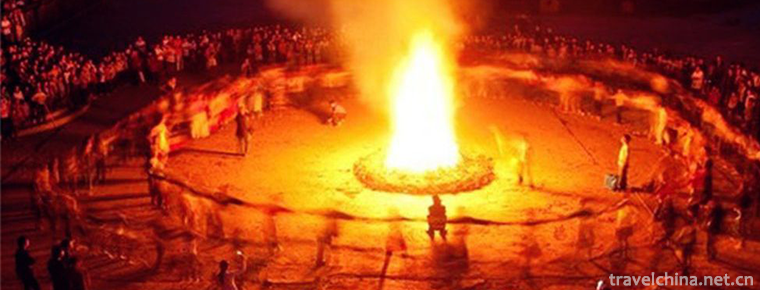
-
Huaxi Qingyan Ancient Town Scenic Area
Qingyan Ancient Town, one of the four ancient towns in Guizhou, is located in the southern suburb of Guiyang City. It was built in Hongwu ten years (1378) of Ming Dynasty and was formerly a military f.
Views: 214 Time 2018-12-12 -
Songxian Tianchishan National Forest Park
The Tianchishan National Forest Park in Songxian County, Luoyang City, is located in Xionger Mountains, northwest of Songxian County, Luoyang City, with a total area of 1716 hectares and a forest cove.
Views: 133 Time 2019-02-13 -
Beijing silk flower
Beijing silk flower, one of the traditional handicraft products in Beijing, also known as "Beijing flower", originated in Shenmuchang Street outside Chongwenmen in Ming Dynasty.
Views: 180 Time 2019-04-04 -
Jamal
In June 2008, Chamane declared by Alxa League of Mongolian Autonomous Region was listed in the second batch of national intangible cultural heritage list with the approval of the State Council..
Views: 144 Time 2019-04-15 -
bir bala
Kazakh is a music-loving nation, known as "horses and songs are the wings of Kazakhstan". Folk songs play a very important role in Kazakh music. Where there is a felt room of Kazakh people, .
Views: 110 Time 2019-05-02 -
Huian stone carving
Hui'an stone sculpture mainly served religion in its early stage, with strong religious color. It is mainly embodied in the architectural design, sculpture and installation of the temple,.
Views: 152 Time 2019-05-05 -
Womens clothing in Yongzhishui Townshi Suzhou
The women's clothing in Yongzhishui Township, Suzhou, is an outstanding representative of the Han nationality's clothing. It is a typical and representative clothing of the working people in Wu area. .
Views: 272 Time 2019-06-17 -
Bao Zheng Bao Qing Tian
Bao Zheng (999 - July 3, 1062), He Xi Ren. Luzhou Hefei (now) Anhui Hefei Feidong People. Northern Song Dynasty Famous ministers..
Views: 172 Time 2019-09-11 -
wolong national nature reserve
Wolong Nature Reserve is located in the southwest of Wenchuan County, Aba Tibetan and Qiang Autonomous Prefecture, Sichuan Province, on the southeast slope of Qionglai mountains, 130 kilometers away from Chengdu.
Views: 250 Time 2020-11-06 -
Convenient facilities and medical services of Chengdu Giant Panda Base
Chengdu Research Base of giant panda breeding has a tourist service center in the hall on the first floor of the museum, which can provide free convenience services such as microwave heating, drinking water hot water, baby carriage, wheelchair, walking stick, umbrella, needle and thread bag, etc..
Views: 386 Time 2020-12-13 -
Transportation in Panzhihua
By the end of 2018, Panzhihua had 3733.91 kilometers of grade roads and 195 kilometers of expressways. In the whole year, the highway passenger traffic volume was 20.79 million person times, the passenger turnover volume was 597.18 million person kilometers,.
Views: 114 Time 2020-12-14 -
Geographical environment of Mianyang
Mianyang City is located in the northwest of Sichuan Basin, in the middle and upper reaches of Fujiang River, bordering Qingchuan county and Jiange County of Guangyuan City in the East, Shehong city and Daying County in Suining City in the south, Luojiang.
Views: 324 Time 2020-12-14
